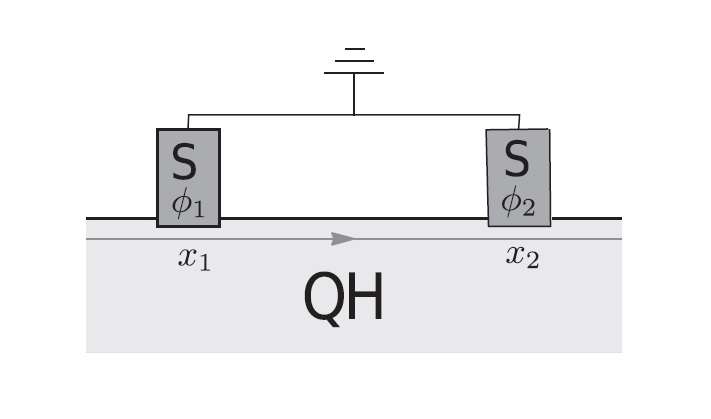May 10, 2017 feature
Physicists predict supercurrent driven by potential information transfer

(Phys.org)—Physicists have theoretically shown that a superconducting current of electrons can be induced to flow by a new kind of transport mechanism: the potential flow of information. This unusual phenomenon is predicted to exist in chiral channels—channels in which electrons are usually restricted to flowing in one direction only—but has never been theoretically demonstrated before now.
The physicists, Xiao-Li Huang and Yuli V. Nazarov at the Delft University of Technology in The Netherlands, have published a paper on the supercurrent induced by potential information transfer in a recent issue of Physical Review Letters.
As the scientists explain, a transport mechanism for electrons that is based on information transfer is unprecedented and has so far never been observed. Further, chiral channels are thought to be incapable of carrying a superconducting current (one with little to no resistance) at all. So it's quite surprising that a supercurrent can be induced in a chiral channel in the first place, and especially by such an exotic mechanism.
The scientists explained that, by definition, the electrons in a chiral channel can only move in one direction. To induce supercurrent, an information transfer in the direction opposite to this direction is required. However, the supercurrent, as it's not the usual electric current, can flow in either direction, depending on the phases on the superconducting leads in the proposed set-up.
The physicists also predict that the supercurrent should persist in the ground state, where, by definition, no actual information transfer can take place. The reason why this is possible is because it's not an actual information flow, but rather the potential for such a flow to occur, that drives the supercurrent.
The physicists hope that this intriguing relation between superconductivity and potential information transfer can lead to some novel capabilities. For example, as they write in their paper, supercurrent might be used to "probe the potential for information transfer without actually transferring the information." The physicists expect that it should be possible to experimentally observe the effect in graphene-based chiral channels, and they hope to further investigate this possibility in the future.
More information: Xiao-Li Huang and Yuli V. Nazarov. "Supercurrents in Unidirectional Channels Originate from Information Transfer in the Opposite Direction: A Theoretical Prediction." Physical Review Letters. DOI: 10.1103/PhysRevLett.118.177001
Journal information: Physical Review Letters
© 2017 Phys.org


















